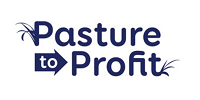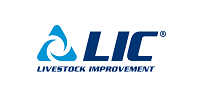- Home
- Knowledge library
- Forage for Knowledge
Forage for Knowledge
Make the most of your farm's potential with the latest regional grass growth and quality data and analysis, updates and resources.
Stay updated with the latest regional grass and quality data, including predictions from AFBI’s 7–10 day grass growth model.
Get expert recommendations to optimise pasture management and maximise productivity.
Make informed decisions—whether it’s adding an extra paddock for silage and assessing its impact on demand or ensuring that growth rates align with your needs.
Use the grass growth wedge to identify potential surpluses or deficits, adjusting your strategy accordingly.
Access the Forage For Knowledge database and resources to manage risks effectively and enhance your decision-making process.
Latest grass growth data
Use the interactive dashboard to view the latest regional grass growth and quality data.
Grass growth commentary and advice
Pasture to Profit consultant Piers Badnell will provide comments (usually, every two weeks) throughout the main grass growing season. Read the latest below.
7 November 2025
With the final Forage for Knowledge update of the season, here are some comments on the data, reflections on the year and a look ahead to next season.
Grass growth
In terms of grass growth, the range is 18–56 kg DM/ha/day. A figure around 18 would be more typical for early November, but 56 is exceptional.
Having said that, in the last week I have had conversations about high growth rates in the 30’s, largely due to very mild conditions. While high temperatures continue to support growth, the shortening day length is putting downward pressure on it.
This leads into the discussion around the correct average cover at the end of November or early December. The standard target is 2,200 kg DM/ha.
For highly stocked units and/or autumn calvers, a slightly higher average cover of 2,300–2,400 kg DM/ha might be appropriate to meet the big demand at the start of grazing season next year.
However, strong growth and average covers higher than this could lead to utilisation and regrowth problems at the start of next year’s grazing season, especially if we have a mild winter and wet start to the year.
If ground conditions are reasonable, can you graze a little longer to get these covers under control if you have high average covers?
We are increasingly seeing milder autumns and winters, so we need to keep adapting to a warming climate.
Review your data
Now is the time to analyse your data on Agrinet:
- Identify which paddocks performed well and which didn’t, and then ask why
- For reliable information to make decisions on, you need a minimum of 30 plate meter readings per paddock per year
Next year could be challenging for milk income; accurate grazing decisions will deflect some of this.
If paddocks underperformed, look at the possible causes:
- Low pH
- Poor soil structure
- High percentages of weeds and weed grasses
Find the answer and make a plan to address them. Now is a good time to soil test. No paddock should have a pH starting with a ‘5’. If you have any starting with a ‘5’ there will be a yield penalty.
Silage quality
Our contributors for this edition have taken some silage samples. There are eight sets of data, and at first glance, they look reasonable. My clients often tell me they have 11 ME silage and 13.5% crude protein and say that that is good. But is it really?
I am talking about milking silage now. Forage for Knowledge data shows grass at 12 ME and 20–30% crude protein. Once ensiled, those figures drop, meaning we’re losing potential in terms of protein, energy and dry matter.
There’s no reason why silage, be that first, second or later cuts, can’t reach 12 ME and 16% crude protein.
When I challenge clients and discussion groups about this, many respond that it’s not possible because of the weather or other factors. But some consistently achieve these results year after year. It might not be easy, but it is possible.
With this in mind, if you produce the quality you need to produce enough of it. But quantity is linked to quality.
Work done at SRUC a number of years ago showed that cutting two weeks earlier than usual produced more silage overall and of higher quality. The first cut yielded less, but the second cut compensated.
Get your second cut in before heading. For late-heading perennials, they head in early June so second cut in late May, before the seed head emerges.
The pay back is huge, even 1 ME/kg DM silage on 14 kg DM silage is 14 ME. A standard litre of milk at 4.2% and 3.4% requires 5.5 MJ ME/litre, so it’s potentially 2.5 litres.
It’s a bit more complex as we need to take body condition gain into account, but there’s more potential to have.
Get more information on improving silage
My to-do list for you
- Take 30 plate meter readings per year
- Review your grass utilisation and look for areas to improve
- Manage strong autumn growth to hit average cover targets
- Soil test and make sure all soils (excluding peat soils) are above pH 6
- Review paddock performance
- Review your silage making – aim for 12 ME and 16% crude protein on all your milking silage
Disclaimer
This data set includes predictions from AFBI’s 7- and 14-day grass growth model.



Latest grass articles and case studies
Useful resources and information
Topics:
Sectors:
Tags:


